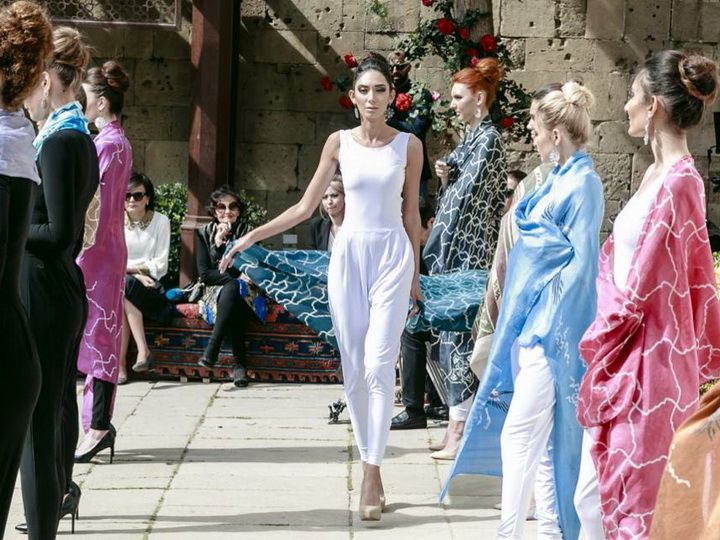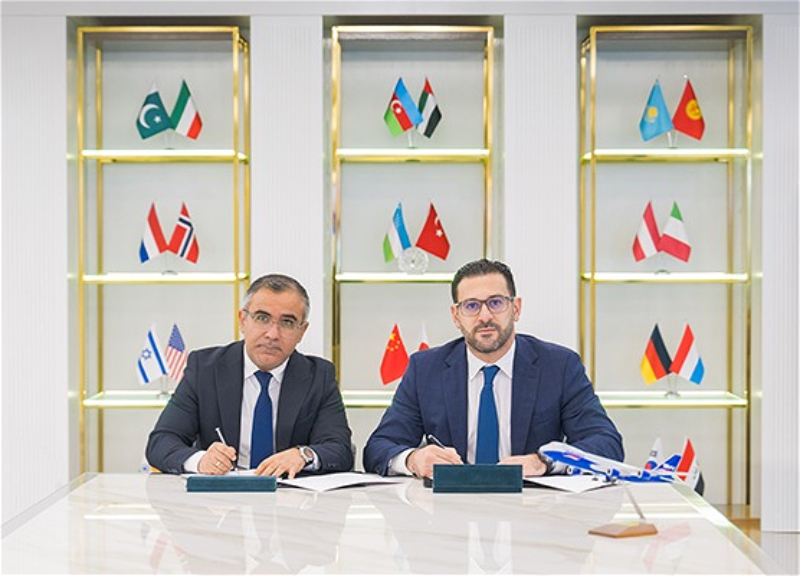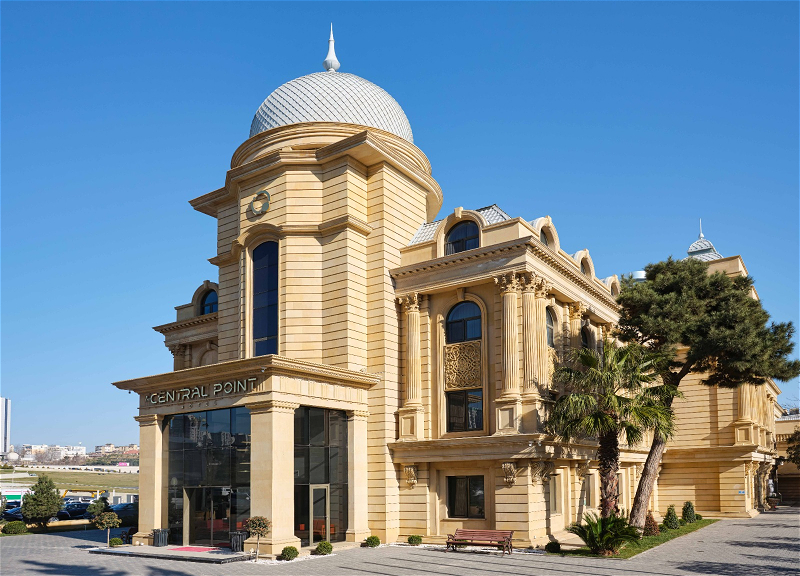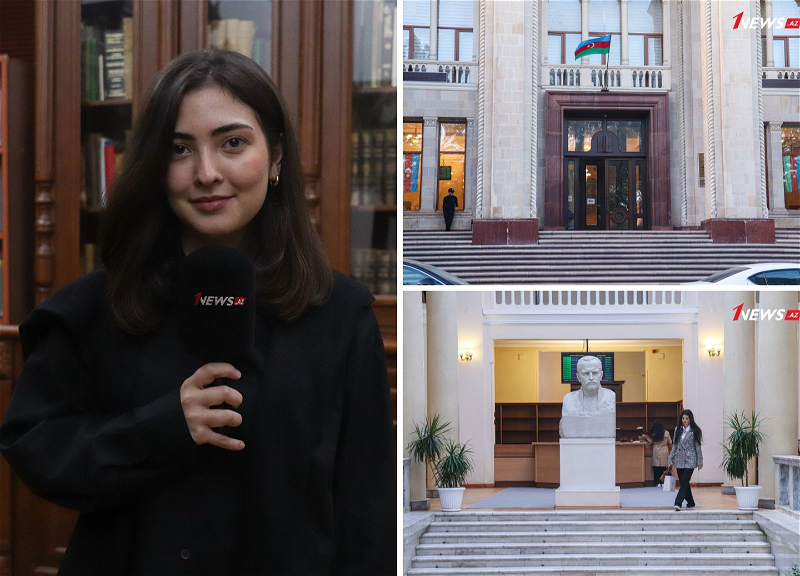Emerging Fashion Capital By The Sea: Azerbaijan Hits The Runway

Name this city. Here are your clues. It boasts award-winning architecture by the late Zaha Hadid, hosts Formula One race, and overlooks a large body of water rich with oil reserves.
If you guessed Dubai, it’s time to upgrade your map of cultural references. Baku, the capital of Azerbaijan, draws visitors to the ancient shores of the Caspian Sea with its ultramodern sensibility and cosmopolitan lifestyle.
One criterion of global ambition for cities and emergent markets is presence and prominence of the fashion industry. Azerbaijan Fashion Week has just celebrated its fifth season. It offers a glimpse into a nation determined to make the most of its new century of prosperity.
.jpg)
Baku impresses with its earnest grandeur. It’s a secular Muslim country that has managed to leave the authoritarian stylistic indoctrination in its post-Soviet past. Futuristic Flame Towers rise above the skyline as proof of the successful transition.
Organizers have centralized most fashion shows and showroom on the grounds of the popular Stone Chronicle Museum which exhibits contemporary marble artists alongside rock carvings dating back to 2000 B.C. The space itself fits the zeitgeist. It’s a converted 1920s electric power station.
Isn’t it all about transforming our outdated relations with Energy now?! Seating rows for fashion week's guests were covered in hand-woven carpets and the atmosphere was reminiscent of the nomadic royal court.
.jpg)
Elaborate colorful scarves and exquisite accessories presented by traditionalist jewelers Dastan looked great offset by the monochrome pantsuits. Stunning embroidery by Elnara Bekirova turned even boudoir nightgowns into… gowns. Lali and Sultan Gadimbayli are based in Istanbul, but opted for Baku as a showcase platform. They brought a much-needed punk/goth edge into the mix. However, theirs was an outlier vision.
.jpg)
The complex layering, beading, and feathering on silks and satins in collections by Uventa made one thing clear. Minimalism doesn’t belong here. The domestic code of luxury is decidedly eastward-bound along the Silk Road. It must be handcrafted, gilded, lavish: 1001 statements in one. Locals love to repeat the joke that Cannes Film Festival or the Oscars have nothing on a typical Azeri wedding when it comes to “red carpet” expectations.
Designers who deliver on this premise, do well both at home and among the wealthy diaspora in Moscow and London. This couture comfort zone is appealing as it is dangerous. The difference between selling well and stagnating creatively is a challenge best tackled early and head on.
.jpg)
“First season, the public did not really believe in the idea of a fashion week. Some simply didn’t know we had designers. Others did not take them seriously. Now, people start to recognize the names. People say, Oh so that’s how it works! It’s a steep learning curve for everyone,” reflects Aykhan Musakhanli, Baku's fashion influencer.
.jpg)
Despite the commercial presence of Gucci, Armani, Céline and other luxury staples, the Azeri premium apparel market is volatile. London’s iconic department store Harvey Nichols opened an ambitious seven-floor 110,000 sq. ft. outpost here in 2015 only to close it within a year.
#IWearAzeri is an Instagram campaign launched to generate interest and pride in domestic designers. At just a couple hundreds of posts (as of publishing date for this article), it’s got a long way to go to achieve its goals. Azerbaijan Fashion Weeks intends to challenge the lingering status quo. “It’s not about new designers, as such. It’s about new ideas,” says Musakhanli.
.jpg)
What Azeri brands need for a global breakthrough, according to Musakhanli and other industry experts, is a systemic approach to design beyond the one-off atelier format, continued education to access latest knowhow available to their peers in established fashion capitals, and last, but not least, “to figure out what is Azeri style”. Perhaps, the best ambassador for current Baku-based fashion is a brand LIBAS Couture.
It was co-founded by Lina Aliyeva and Zemfira Musaeva. The collection was inspired by the classic Leo Tolstoy novel Anna Karenina. However, instead of predictable glamorizing or dramatizing of the story’s highs and lows, Musaeva turned to many of the book’s quieter introspective moments.
She sketches the entire collection in sequence like a dramaturg. Each look captures a different Karenina in an in-between moment. It’s a strong, assured collection worth the international attention it’s beginning to generate for LIBAS.
When Musaeva was asked about long-term goals, she quipped: “You know the urban legend about Lagerfeld? That he can leave a sketch on a desk and his team would turn it into a garment by the next morning? I have three amazing fulltime seamstresses, but I want a real factory!”
.jpg)
The brand pushes boundaries and sets precedents in the region with its unique interpretations of traditional elements and bold runway presentations. A previous Degas-inspired collection caused a stir when models appeared nude under evocatively transparent layers of organza.
Media pressured Musaeva on whether or not she was afraid to dare the presumptions of local conservatism. “Fear? I detest the very word. I expunge it at first inkling.” Perhaps, others in Azerbaijan and beyond should follow suit.














